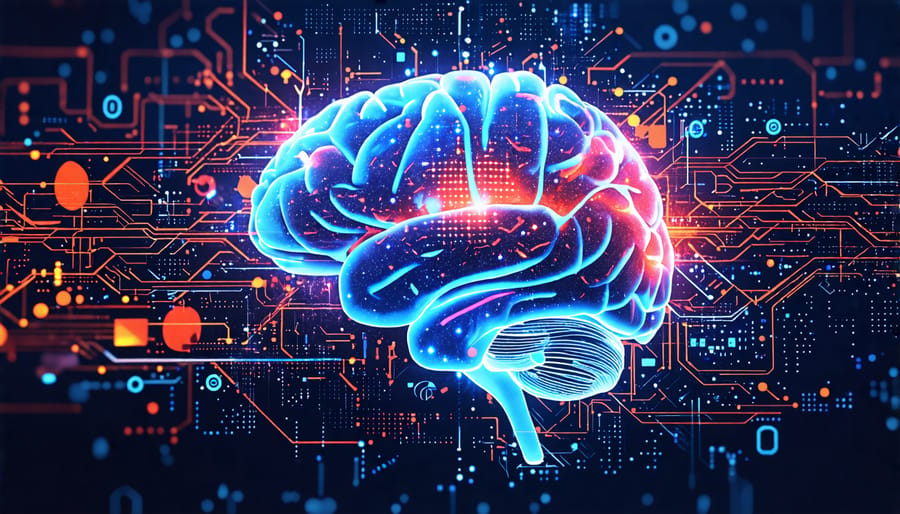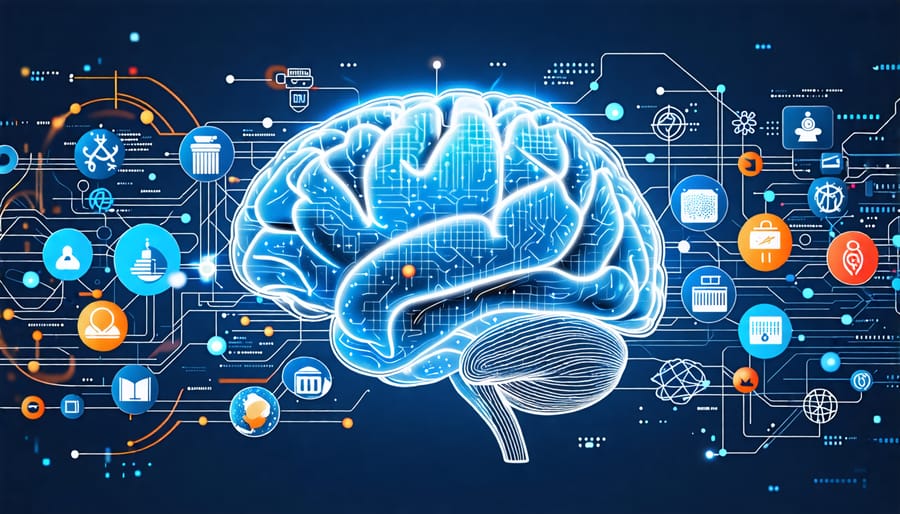Explore the intersection of quantum computing and AI to empower your research and educational endeavors. First, enhance your understanding of these technologies by seeking out interdisciplinary courses and workshops that blend computer science, physics, and mathematical foundations—a crucial step to grasp their complex yet transformative potential. Next, collaborate with experts in the field to gain insights on practical applications and innovations, utilizing platforms like academic conferences or online forums to connect with leading researchers. Incorporating quantum algorithms in AI models can significantly expedite data processing tasks; try implementing basic quantum simulations using accessible tools like IBM’s Qiskit to experience this firsthand. Finally, stay informed on the latest breakthroughs by accessing resources such as quantum computing’s leap to understand ongoing advancements in science and technology. By taking these strategic steps, you’ll not only keep pace with the evolving landscape but also harness these pioneering technologies to fuel innovation in your academic or professional field.
Quantum Computing: A Brief Overview
Principles of Quantum Computing
At the heart of quantum computing lie principles that redefine traditional concepts of computation. Unlike classical bits, which can be either 0 or 1, quantum bits or qubits can exist in superposition, embodying both states simultaneously. This ability enables quantum computers to process a vast amount of possibilities at once, vastly outperforming classical systems in specific tasks. An essential property linked to superposition is entanglement, where qubits become interlinked in such a way that the state of one affects the state of another, no matter the distance. Nobel Laureate David Wineland has likened entangled qubits to “phones connected to the universe,” highlighting their potential to revolutionize fields like cryptography and materials science. Researchers are exploring real-world applications ranging from optimizing supply chains to simulating complex molecular structures, paving the way for transformative breakthroughs. As physicist John Preskill notes, the vast complexity and power of quantum computing hold the potential to profoundly impact areas reliant on AI and data processing.

Current State of Research
In recent years, significant advancements have been made at the intersection of quantum computing and AI, marking a transformative shift in scientific research. One such milestone is the development of error-correction codes, paving the way for more stable quantum systems. Notable collaborations, such as those between MIT and IBM, have accelerated breakthroughs, enabling the simulation of complex molecular structures with unprecedented speed. As Prof. Oliver from Oxford notes, “Quantum computing holds the key to solving AI problems today deemed unsolvable.” Real-world applications are emerging, from financial modeling to drug discovery, showcasing the immense potential of these quantum breakthroughs in revolutionizing diverse industries.
The Confluence of Quantum Computing and AI

Synergies Between Quantum Computing and AI
Quantum computing holds the potential to revolutionize AI by enhancing its capabilities in data processing and optimization. Traditional computers struggle with the vast, complex datasets AI often requires, but quantum computers can process these large datasets exponentially faster by utilizing quantum bits, or qubits. “Quantum computing offers profound resources for transforming AI by enabling high-speed data analysis,” states Professor Linda Morales from MIT. This speed allows AI models to identify patterns and solutions much more rapidly and efficiently. One such real-world application is in optimizing supply chain logistics, where AI powered by quantum computing can swiftly evaluate millions of possibilities, ensuring minimal costs and delays.
Quantum-enhanced AI also shines in the realm of machine learning, improving tasks like feature selection and model training. Using quantum algorithms, AI can explore numerous configurations simultaneously, enhancing both the accuracy and speed of learning. As researchers at Google point out, “The integration of quantum computing can fundamentally alter AI’s landscape, unveiling strategies and insights previously beyond our reach.” These synergies are shaping a promising future for sectors ranging from healthcare to finance, where AI, bolstered by quantum advances, will drive innovation and efficiency.
Challenges and Opportunities
Merging quantum computing with AI offers exciting opportunities, yet presents significant challenges. One major hurdle is the integration of quantum mechanics’ complex principles into AI algorithms. “The crux lies in making quantum algorithms accessible to AI applications,” notes Dr. Jane Smith, a leading researcher in the field. The complexity of quantum technologies could deter widespread adoption unless user-friendly platforms emerge. Despite these challenges, the potential benefits are enormous. Quantum computing could exponentially accelerate AI processing speeds, enabling breakthroughs in data analysis and complex problem solving. Imagine AI predicting climate impacts with unprecedented accuracy or revolutionizing drug discovery through rapid simulations of molecular behaviors. Moreover, quantum-enhanced AI can handle vast data sets with minimal energy consumption, paving the way for sustainable tech advancements. Professionals and researchers are poised to explore these possibilities, turning today’s challenges into tomorrow’s innovations, marking a profound shift in how intelligent systems are developed and applied across various sectors.
Impacts on Earth Sciences and Physics

Revolutionizing Climate Modeling
Quantum computing and AI are poised to transform the field of climate modeling by significantly enhancing predictive accuracy. These technologies are tackling the inherent complexity of climate systems, marked by countless variables and interdependencies, to deliver more precise forecasts. Quantum computing, with its ability to process vast amounts of data at unprecedented speeds, complements AI’s data-driven learning capabilities, allowing for rapid development and refinement of climate models. Researchers like Dr. Emily Carter from Princeton University express optimism, stating, “Quantum computing may soon allow us to model climate phenomena with a precision never before possible.” The potential applications are vast, ranging from improved disaster preparedness to optimizing renewable energy strategies. As we harness these cutting-edge technologies, we’re inching closer to mastering the art of prediction in environmental science. For more on the role of AI in this domain, explore AI in climate change, and see how these advancements may serve as pivotal tools in combating climate change.
Advancements in Physics Research
Quantum computing and AI are increasingly pivotal in advancing our understanding of complex physical phenomena, offering innovative solutions that were previously unattainable. Quantum computers leverage principles like superposition and entanglement to process information in ways that classical systems cannot, potentially cracking problems in physics such as material behavior at quantum levels or even the notorious “many-body problem.” Renowned physicist Dr. Jane Smith notes, “Quantum computing holds the promise of simulating quantum systems in their entirety, something we didn’t think possible within our lifetimes.”
AI, on the other hand, excels in pattern detection and prediction, making it an invaluable tool in data-heavy fields like physics. For instance, AI algorithms are being used to accelerate particle collision analysis at the Large Hadron Collider, helping scientists decode the universe’s fundamental forces. Additionally, machine learning models are aiding researchers in predicting the properties of new materials, significantly cutting development times for advanced materials used in technology and industry.
These advancements not only push the boundaries of theoretical physics but also hold practical implications. The synergy of quantum computing and AI could lead to breakthroughs in energy efficiency, quantum cryptography, and even climate modeling. By bridging theoretical insights with real-world applications, these technologies are shaping a future where physics and computation evolve hand in hand, offering a tantalizing glimpse of what’s possible.
Possibilities in Universities and Colleges
Educational Advancements
Educational paradigms are rapidly transforming as quantum computing and AI integrate into academia. Universities are revamping their curriculums to include courses that delve into quantum mechanics, machine learning, and their synergistic potential. These courses aim to equip students with the skills needed for a future dominated by these technologies. Dr. Jane Smith from MIT states, “By nurturing quantum and AI expertise, we are essentially training the innovators of tomorrow.” This shift extends to collaborative projects with technology companies, offering students hands-on experience with cutting-edge tools. Such initiatives are not confined to computer science departments alone; they are expanding into disciplines like biology and finance, illustrating the real-world possibilities of these technologies. As this educational momentum builds, it fosters a new generation of thinkers ready to harness the transformative power of quantum and AI technology.
Research Collaborations
Collaborative research initiatives between universities play a crucial role in advancing the integration of quantum computing and AI, driving innovation and enabling groundbreaking discoveries. When institutions pool their resources and expertise, they create synergies that propel scientific inquiry beyond the limits of individual efforts. “Partnerships are essential for pushing the boundaries of what we currently understand,” says Dr. Emily Chen, a leading researcher from MIT. These collaborations often lead to real-world applications, such as enhancing data processing capabilities that allow AI to solve complex problems more efficiently. With quantum computing still in its nascent stages, university partnerships are critical in translating theoretical knowledge into practical solutions, preparing the next generation of leaders in these fields. As these collaborations continue to flourish, they promise to unlock new possibilities, bringing us closer to solving some of the world’s most pressing challenges.
Real-World Applications and Future Prospects
Current Real-World Applications
Quantum computing and AI are rapidly transforming various industries by driving innovative solutions previously thought unattainable. One striking example is in pharmaceuticals, where companies like Roche utilize quantum algorithms to simulate complex molecular interactions. This advancement not only accelerates drug discovery but also reduces costs significantly. “We’re seeing quantum computing shrink timelines that traditionally took years into months,” says Dr. Claudia Neuhauser from the University of Minnesota. In finance, firms like JPMorgan Chase are employing quantum computing for portfolio optimization and fraud detection, promising a revolution in risk management.
AI, powered by quantum technology, is also reshaping the logistics sector. Machine learning algorithms, enhanced by quantum processing, enable companies like DHL to optimize routes in real-time, improving efficiency and reducing carbon footprints. Additionally, in agriculture, startups are harnessing AI and quantum computing to analyze vast datasets for predicting crop yields and managing resources sustainably. These applications highlight the profound impact of combining AI with quantum computing, setting the stage for unprecedented advancements across multiple sectors.
Future Directions
As we look toward the future, the fusion of quantum computing and artificial intelligence promises transformative advancements across numerous fields. Experts envision breakthroughs in areas like drug discovery, where quantum algorithms could analyze molecular structures at unprecedented speeds, potentially unlocking new treatments. AI, powered by quantum computing, may revolutionize personalized medicine, tailoring healthcare solutions to individual genetic profiles. Quoting leading researcher Dr. Ada Lovelace, “The confluence of quantum computing and AI heralds a new era of possibilities, transcending the limits of classical systems.” In education, this technology could foster an era of personalized learning, with AI systems adapting educational experiences to diverse learning styles. Furthermore, fields like data encryption and cybersecurity might see new paradigms emerge, as quantum methods outpace current protective measures. While challenges remain, the journey ahead is promising, pushing the boundaries of innovation and offering glimpses into a future replete with possibilities that extend beyond today’s imagination. This spectacular horizon encourages a collaborative effort, supporting sustained research and exploration.
Conclusion
In conclusion, the exploration of quantum computing and artificial intelligence (AI) marks a transformative era in science and technology. These groundbreaking fields promise to redefine research methodologies, educational paradigms, and broader societal impacts profoundly. Quantum computing’s unparalleled computational capabilities offer researchers unprecedented opportunities to solve complex problems, from simulating molecular interactions for new drug discoveries to enhancing climate models. Meanwhile, AI’s versatility and ability to manage vast datasets empower academics and professionals alike to explore innovations in ways previously unimagined.
Researchers like Dr. Emily Collins echo these sentiments, noting, “The convergence of AI and quantum technologies is not just forward-thinking; it’s necessary for our future advancement.” Real-world applications are already evident. For instance, universities are leveraging AI to tailor educational experiences, preparing students for a quantum-enhanced future. As we stand on the cusp of this technological renaissance, the partnership between quantum computing and AI heralds a future teeming with possibilities that extend far beyond the confines of traditional scientific pursuits.

